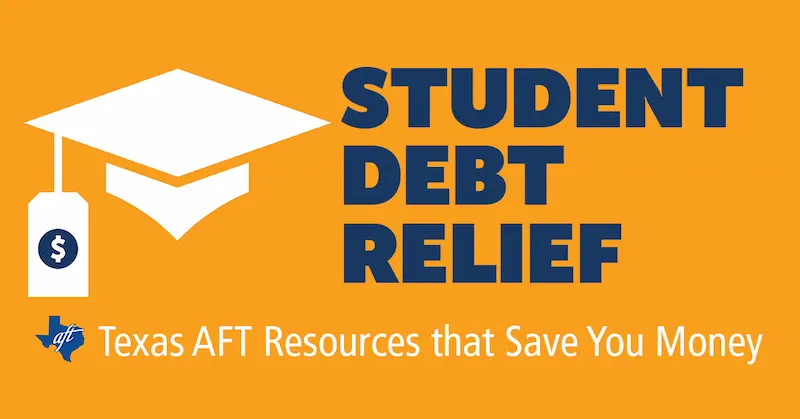If you’re feeling overwhelmed by student loans, you’re not alone. Millions of students and graduates struggle with the burden of debt, wondering how they’ll ever manage payments, save money, or plan for the future. The good news is that there are best debt relief programs for students that can significantly reduce or even eliminate your student loan burden.
In this guide, we’ll break down the most effective programs, who qualifies, and how to get started — in a way that’s easy to understand and follow.
Why You Should Consider Student Debt Relief

Student loans are often a necessary part of higher education, but they can become a financial strain. Debt relief programs exist to help students and graduates manage their loans, lower monthly payments, or even forgive the remaining balance. Understanding your options is key to choosing the right program for your situation.
These programs are designed to:
- Reduce your monthly loan payments
- Make repayment based on your income
- Forgive some or all of your student loans after meeting certain requirements
- Provide relief for public service workers, teachers, and other professionals
Let’s explore the best debt relief programs for students available today.
Top Debt Relief Programs for Students

1. Income-Driven Repayment (IDR) Plans
Income-Driven Repayment (IDR) plans are federal programs that adjust your monthly payments based on your income and family size. They are ideal for students who have federal loans and a lower income.
How It Works:
- Your monthly payment is calculated as a percentage of your discretionary income.
- After 20 or 25 years of qualifying payments (depending on the plan), any remaining loan balance can be forgiven.
- There are several types of IDR plans: Income-Based Repayment (IBR), Pay As You Earn (PAYE), Revised Pay As You Earn (REPAYE), and Income-Contingent Repayment (ICR).
Benefits:
- Makes monthly payments manageable even if your salary is low.
- Gives a long-term plan to eventually reduce debt.
Things to Watch Out For:
- Only federal student loans qualify.
- You must recertify your income annually.
- Forgiven debt may be considered taxable income.
2. Public Service Loan Forgiveness (PSLF)
If you work for the government or a qualifying nonprofit organization, Public Service Loan Forgiveness (PSLF) can be a game-changer.
How It Works:
- You must have federal Direct Loans and be enrolled in an eligible repayment plan.
- Work full-time for a qualifying public service employer.
- Make 120 qualifying monthly payments (10 years of service).
- Remaining balance is forgiven tax-free.
Benefits:
- Full forgiveness of remaining federal student loans.
- Tax-free forgiveness, unlike some other programs.
Things to Watch Out For:
- Only payments made under the correct plan and employer count.
- Requires careful tracking and documentation of payments.
- Some borrowers face delays due to paperwork errors — keep detailed records.
3. Teacher Loan Forgiveness
Teachers working in low-income schools may qualify for Teacher Loan Forgiveness.
How It Works:
- Teach full-time for five consecutive years in a low-income school or educational service agency.
- You may be eligible for forgiveness up to $17,500, depending on the subject you teach.
Benefits:
- Specifically designed for teachers, especially in high-need subjects like math, science, or special education.
- Encourages public service in education.
Things to Watch Out For:
- You must work in a qualifying school or district.
- Only certain types of federal loans qualify.
4. Healthcare and Service-Based Loan Forgiveness
Many healthcare workers can take advantage of loan repayment programs, such as the National Health Service Corps (NHSC) Loan Repayment Program.
How It Works:
- Serve in under-served areas or high-need locations.
- Receive partial or full repayment of qualifying student loans for your service commitment (usually 2-4 years).
Benefits:
- Reduces financial stress for healthcare professionals.
- Encourages service in areas that need it most.
Things to Watch Out For:
- Must meet service location and duration requirements.
- Only certain loan types qualify.
5. Loan Discharge for Special Circumstances
There are specific cases where federal loans can be discharged entirely:
- Closed School Discharge: If your school closes while you’re enrolled or shortly after you withdraw.
- Borrower Defense to Repayment: If your school misled you or engaged in fraud.
- Total and Permanent Disability Discharge: If you are permanently disabled.
- Death Discharge: If the borrower passes away.
Benefits:
- Complete loan forgiveness in certain circumstances.
- Provides relief if unexpected events disrupt your education or ability to work.
Things to Watch Out For:
- Documentation and eligibility requirements are strict.
- The application process may take time.
You may also like to read this:
14 Simple Student Loan Management Tips To Save Money
How To Pay Off Loans Faster: Easy Steps To Become Debt-Free
Manage Multiple Student Loans Easily: Complete Guide
Student Loan Payment Tracking Methods Made Easy
Easy Student Debt Relief Options: Reduce Your Loans Fast
How to Choose the Best Program for You
Choosing the right program requires a careful look at your loans, income, and career path. Here’s a simple step-by-step guide:
- Identify Your Loan Type: Federal loans vs. private loans. Most forgiveness programs only apply to federal loans.
- Evaluate Your Career Path: Are you in public service, teaching, healthcare, or nonprofit work? If so, PSLF or service-based programs may be ideal.
- Calculate Your Payments: For IDR, estimate monthly payments and see how long it will take to qualify for forgiveness.
- Track Everything: Maintain detailed records of payments, employment certification, and communication with loan servicers.
- Avoid Scams: Legitimate programs are free. Avoid services promising instant forgiveness or asking for upfront fees.
International Students or Non-U.S. Residents
If you’re outside the U.S., such as in Pakistan or another country, federal U.S. programs may not apply. However, many local organizations provide interest-free or low-interest educational loans, which help ease debt. For example, in Pakistan, the Akhuwat Foundation offers interest-free educational loans, which can reduce financial stress while pursuing higher education.
FAQs
Q1: Can private loans be forgiven like federal loans?
A1: Most private loans don’t qualify for federal forgiveness programs. Some lenders may offer hardship repayment options, but forgiveness is rare.
Q2: Is student loan forgiveness taxable?
A2: It depends. PSLF and certain discharge programs are tax-free, but some IDR forgiveness may be taxable as income.
Q3: How long does it take to get forgiveness?
A3: It varies: IDR plans can take 20–25 years, PSLF requires 10 years, and teacher/healthcare programs usually require 2–5 years of service.
Q4: Can I switch repayment plans to qualify?
A4: Yes, but make sure you understand how previous payments count. Switching incorrectly can delay forgiveness.
Final Thoughts
If you’re serious about managing your student loans, knowing the best debt relief programs for students is crucial. Whether you choose an income-driven repayment plan, public service forgiveness, or a program tailored for teachers or healthcare professionals, being proactive can save you years of stress and thousands of dollars.
Remember: Stay organized, track your payments, and avoid scams. With the right program, student debt doesn’t have to control your life — it can be managed, reduced, and in some cases, fully forgiven.





